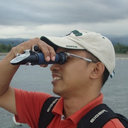Akuatikisle: Jurnal Akuakultur, Pesisir dan Pulau-Pulau Kecil
Full Length Article
Nutrient Absorption Rate of Oryzias celebensis Embryo
Highlights
Generate NLP AI by Wizdam ID.
Abstract
Oryzias celebensis is a species of medaka fish in South Sulawesi. During incubation, the growth and development of these fish embryos depend on the nutrients stored in the eggs. Therefore, this study aimed to determine the volume size of egg yolks and oil droplets and the absorption rate of egg yolks of O. celebensis embryos that reared in different incubation media. The study was conducted using a completely randomized design (CRD) with four rearing media treatments, namely A (Early Rearing Media), B (bottled water), C (Pattunuang river water) and D (well water) with five replications . The results showed that the volume of egg yolk and O. celebensis embryo oil in each medium showed a decrease in volume size along with the embryonic development stage. The absorption rate of yolk in O. celebensis embryos in media A had the biggest yolk absorption with an average 0.015±0.038 mm3 while media D had the smallest yolk absorption with an average 0.011±0.022 mm3.
Keywords
Introduction
Section snippets
Material and Methods
Materials and methods from the full-text PDF of this article cannot be displayed.
Results
Results from the full-text PDF of this article cannot be displayed.
Discussion
Discussion from the full-text PDF of this article cannot be displayed.
Conclusions
Conclusions from the full-text PDF of this article cannot be displayed.
Acknowledgment
Acknowledgment from the full-text PDF of this article cannot be displayed.
Funding Information
Kemendikbudristek (Nomor Kontrak 752/UN4.22./PT.02.00/2021)
Competing interest
The authors declare that they have no known competing financial interests or personal relationships that could have appeared to influence the work reported in this paper.
Conflict of interest
The authors declare that the research was conducted in the absence of any commercial or financial relationships that could be construed as a potential conflict of interest.
Ethical approval acknowledgements
No ethical approval required for this article. All procedures followed were in accordance with the ethical standards of the responsible committee on human experimentation (institutional and national) and with the Helsinki Declaration of 1975, as revised in 2008 (5)
Supplementary files
Data sharing not applicable to this article as no datasets were generated or analysed during the current study, and/or contains supplementary material, which is available to authorized users.
Bibliographic Information
Cite this article as:
-
Submitted
20 October 2021 -
Accepted
15 November 2021 -
Published
17 November 2021 -
Version of record
26 February 2022 -
Issue date
30 November 2021
-
Academic subject
Fisheries Science
Copyright
The Indonesian Archipelago has enormous potential for marine resources. Marine biological resources are scattered in almost all areas from the coast to the deep sea. Various biological resources of mangroves, fish, shellfish, crustaceans, corals, and much more. Behind that, there are the challenges of resource management and economic growth.
Copyright © 2021 Lalombo, Y.I., Yaqin, K., & Omar, S.B.. Sangia Research Media and Publishing. Production and hosting by Sangia (SRM™).  This work is licensed under a Creative Commons Attribution-ShareAlike 4.0 International License.
This work is licensed under a Creative Commons Attribution-ShareAlike 4.0 International License.
Disclaimer: All claims expressed in this article are solely those of the authors and do not necessarily represent those of their affiliated organizations, or those of the publisher, the editors and the reviewers. Any product that may be evaluated in this article or claim that may be made by its manufacturer is not guaranteed or endorsed by the publisher.
Comments on this article
By submitting a comment you agree to abide by our Terms and Community Guidelines. If you find something abusive or that does not comply with our terms or guidelines please flag it as inappropriate.



